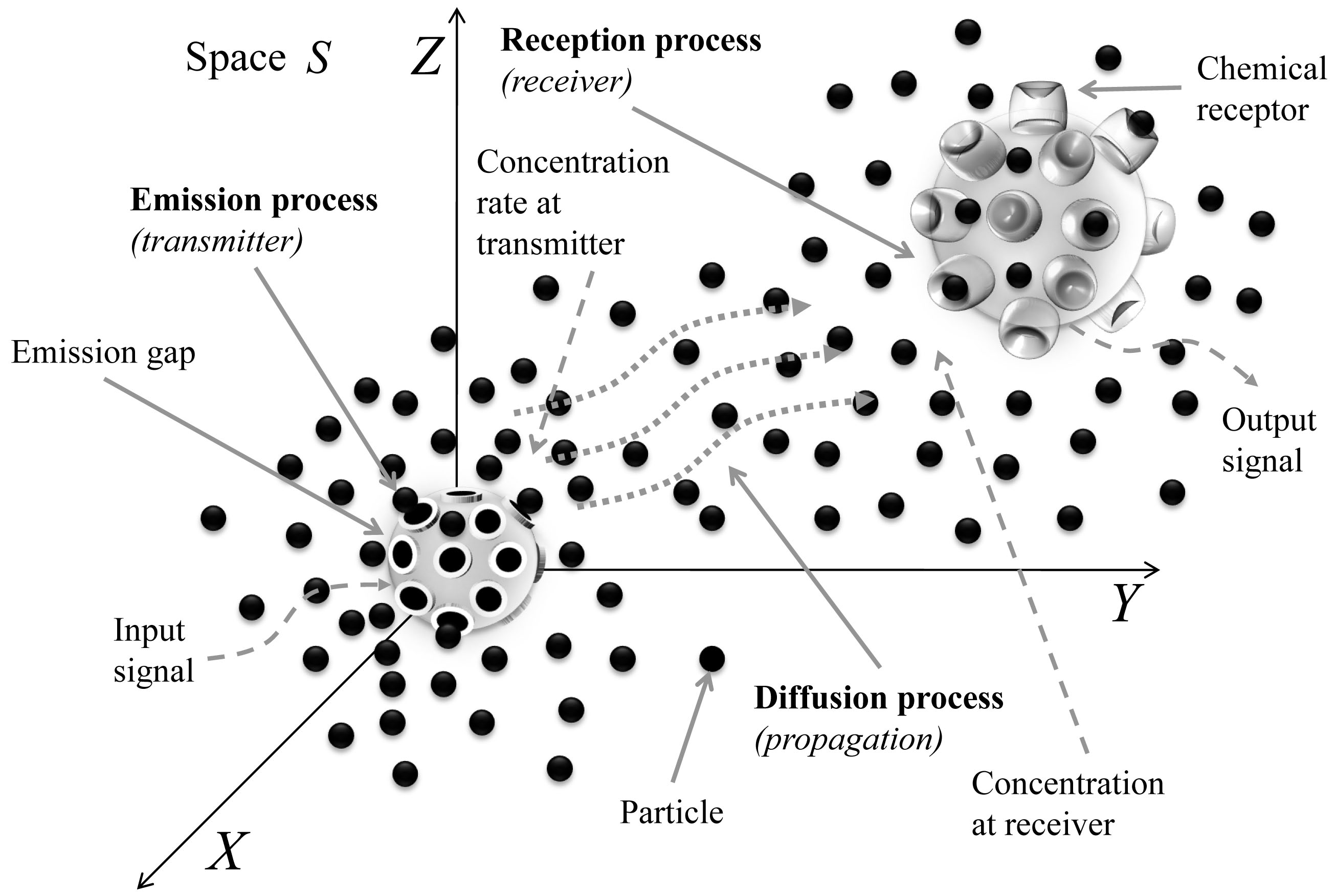School of Electrical and Computer Engineering School of Mechanical Engineering School of Biology
This material is based upon work supported by the National Science Foundation under Grant No. 1110947.

Disclaimer: Any opinions, findings, and conclusions or recommendations expressed in this material are those of the author(s) and do not necessarily reflect the views of the National Science Foundation.
MoNaCo: Molecular
Nano-Communication Networks
Project Overview
Nanotechnologies are providing a new set of tools to the engineering community to design and manufacture devices in a scale ranging from one to a few hundred nanometers. At this scale, a nanomachine is defined as the most basic functional unit, which is able to perform only very simple tasks, such as computing, data storing, sensing and actuation. Nanonetworks, i.e., the interconnection of nanomachines in networks, will expand the capabilities of single nano-devices by providing them a way to cooperate and share information. Traditional communication technologies based on electromagnetic waves need to undergo a profound rethinking in order to meet the requirements of these networks. Moreover, there are specific applications of nanonetworks in which the utilization of electromagnetic waves is not feasible, such as in intra-body applications. Alternatively, molecular communication, i.e., the use of molecules to encode and transmit information among nanomachines, represents a radically new communication paradigm, which demands novel solutions, including the identification of existing molecular communication mechanisms,
the establishment of the foundations of molecular information theory, or the development of architectures and networking protocols for nanomachines.
This project is proposed to address the above challenges for the realization of this new communication paradigm.
[News Article] [Picture]

Graphical sketch of a molecular nanonetwork with two nodes.